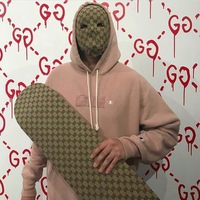
Напишите эссе на тему : " Standarts of beauty. Past and Present" (пожалуйста, нужно очень срочно)
 0
0
 0
0
Ответы на вопрос
 Внимание! Ответы на вопросы дают живые люди. Они могут содержать ошибочную информацию, заблуждения, а также ответы могут быть сгенерированы нейросетями. Будьте внимательны. Если вы уверены, что ответ неверный, нажмите кнопку "Пожаловаться" под ответом.
Внимание! Ответы на вопросы дают живые люди. Они могут содержать ошибочную информацию, заблуждения, а также ответы могут быть сгенерированы нейросетями. Будьте внимательны. Если вы уверены, что ответ неверный, нажмите кнопку "Пожаловаться" под ответом.

Arguably, today’s beauty standards say that women are expected to wear makeup in their daily lives, work out at the gym, stay skinny with curves in the right places, and be young. However, what makes today different from the past is that we can also show our uniqueness, as society has become more inclusive. These trends are all influenced by history and technological developments that we’re about to tell you all about.
.
.
In the 1950s, more makeup like foundation, eyeliner, and blush began being used. This was a time when colored movies were becoming popular, and women began to copy these theatrical faces from the big screen. Actresses such as Clara Bow, Elizabeth Taylor, and Marilyn Monroe were some of the most popular.
Since then, makeup has been a huge part of so many women’s lives. In fact, the global makeup industry is thought to be worth around $640 billion in 2020.
.
.
Today’s ideal body shape is an exaggerated hourglass: a thin waist and legs, and a large butt and breasts. In the 1950s and 1960s, the idea of slimmer bodies being healthier and more attractive started. Beauty icons such as Brigitte Bardot, Audrey Hepburn, and Sophia Loren impacted this ideal body type significantly.
Later, the “size 0” supermodel look of the 1990s, made popular by Naomi Campbell, Kate Moss, and Claudia Schiffer, became trendy. These trends still exist today as one ideal body shape that is both slim and curvaceous.
 0
0
 0
0

"Standards of Beauty: Past and Present"
Introduction: The concept of beauty has been a defining aspect of human societies throughout history. From ancient civilizations to modern times, the standards of beauty have evolved, reflecting cultural, social, and technological changes. Comparing the standards of beauty from the past to those of the present offers insight into the shifting perceptions of aesthetics and the factors that shape them.
Body Image in the Past: In ancient civilizations, the perception of beauty was often linked to cultural and symbolic values. For example, in ancient Egypt, a slender and elongated neck was considered beautiful, reflecting notions of elegance and royalty. In Ancient Greece, physical ideals centered around the harmonious proportions of the human body, as depicted in sculptures like the renowned "Venus de Milo." These ideals were a reflection of philosophical notions of balance and proportion.
Throughout history, societal and economic factors played a significant role in shaping beauty standards. In eras when food was scarce, a fuller figure was often associated with prosperity and health. Renaissance art celebrated voluptuous bodies as a sign of fertility and wealth. However, as times changed, so did perceptions of beauty.
Evolution of Beauty in the Modern Era: The Industrial Revolution brought about significant changes in societal structure and culture. The rise of the fashion industry and the mass media began to influence perceptions of beauty on a broader scale. The emergence of photography and, later, film propagated specific ideals of attractiveness. Icons like Marilyn Monroe in the mid-20th century showcased an hourglass figure, reinforcing notions of feminine beauty.
As societies became more interconnected, standards of beauty began to transcend cultural boundaries. The late 20th century saw the rise of supermodels like Cindy Crawford and Naomi Campbell, who popularized a tall and slim physique as the global standard of beauty. However, these ideals were criticized for promoting unrealistic body images and contributing to issues like body dysmorphia and eating disorders.
The Present Paradigm Shift: In recent years, there has been a significant paradigm shift in beauty standards. Modern society is increasingly recognizing the importance of inclusivity and diversity. Movements like body positivity have gained momentum, challenging traditional notions of beauty and promoting acceptance of all body types, sizes, and appearances.
The influence of social media has played a pivotal role in this transformation. Platforms like Instagram and TikTok have provided a space for marginalized voices and unconventional beauty standards to be celebrated. The rise of influencers and models of various ethnicities, body sizes, and genders has led to a more inclusive definition of beauty. Consumers now demand authenticity and representation in the media they consume.
Conclusion: The evolution of beauty standards from the past to the present reflects the dynamic nature of human perception and the impact of cultural, societal, and technological changes. While the past often held specific, sometimes rigid, ideals of beauty, the modern era is witnessing a transformation towards inclusivity, diversity, and authenticity. This shift signifies a growing awareness of the harmful effects of narrow beauty standards and a recognition of the value of self-acceptance and self-expression. As we continue to progress, it's crucial to appreciate the multiplicity of beauty and foster an environment that celebrates all forms of human appearance.
 0
0
 0
0
Похожие вопросы
Топ вопросов за вчера в категории Английский язык
Последние заданные вопросы в категории Английский язык
-
Математика
-
Литература
-
Алгебра
-
Русский язык
-
Геометрия
-
Английский язык
-
Химия
-
Физика
-
Биология
-
Другие предметы
-
История
-
Обществознание
-
Окружающий мир
-
География
-
Українська мова
-
Информатика
-
Українська література
-
Қазақ тiлi
-
Экономика
-
Музыка
-
Право
-
Беларуская мова
-
Французский язык
-
Немецкий язык
-
МХК
-
ОБЖ
-
Психология
-
Физкультура и спорт
-
Астрономия
-
Кыргыз тили
-
Оʻzbek tili




















